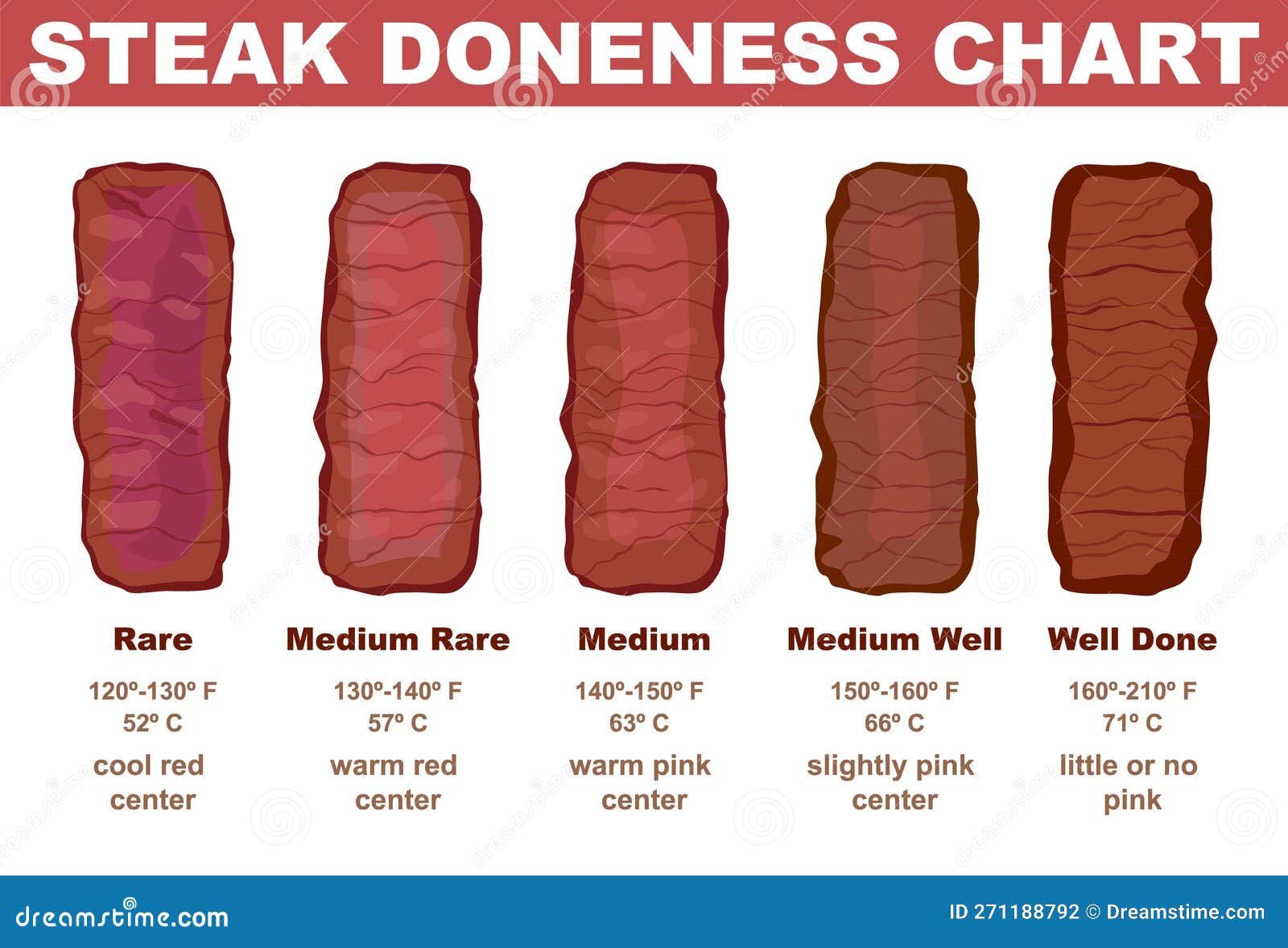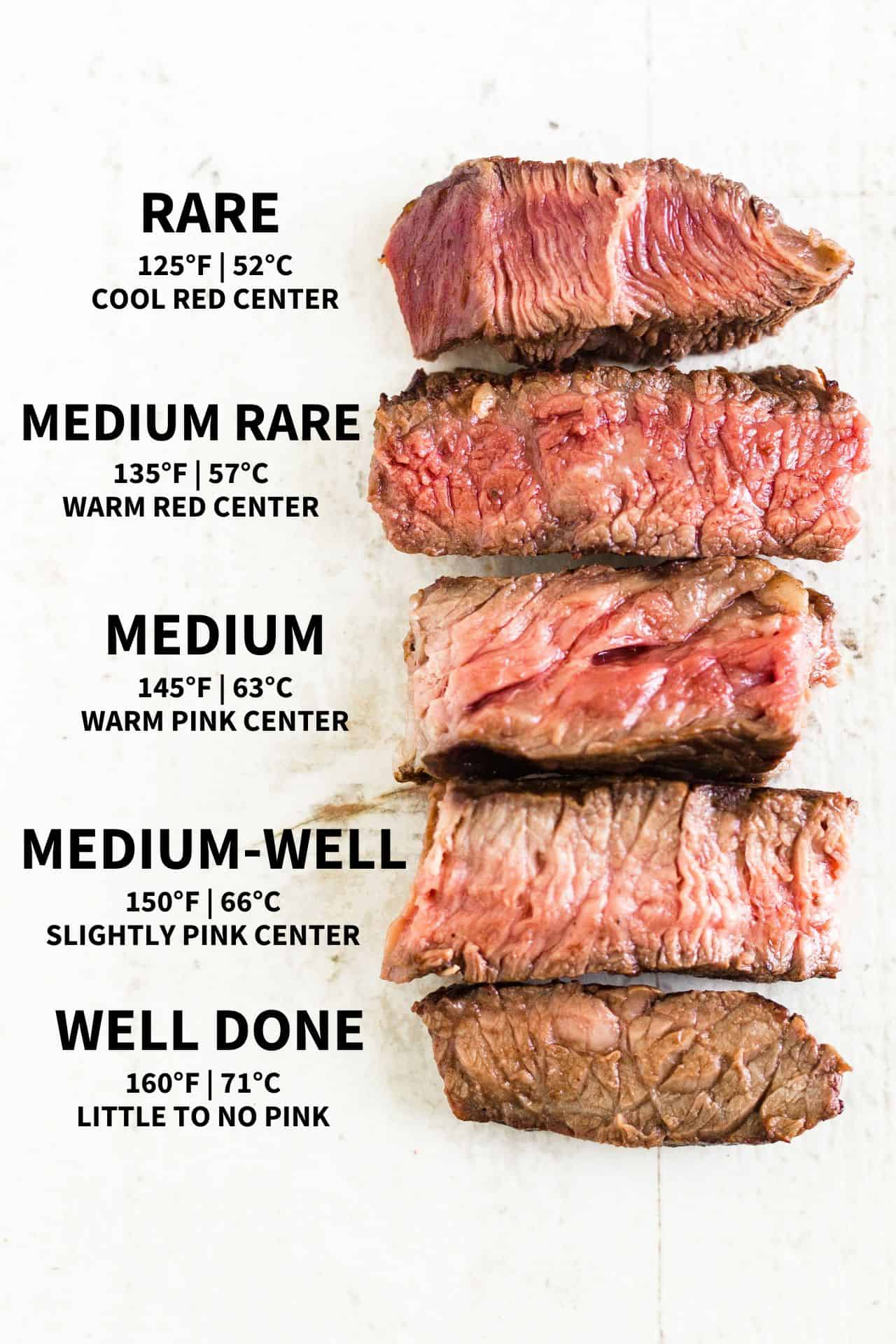Cooking beef to the proper doneness is key for bringing out the best flavor and texture. Undercooking beef can lead to a meal that is tough and chewy. But going too far in the other direction produces dry, stringy meat. So how do you know exactly when your beef is done to juicy, tender perfection? Read on for tips on identifying doneness for steaks, roasts, burgers and more.
Use a Meat Thermometer for Foolproof Results
The most reliable way to test beef doneness is by taking its internal temperature with an instant-read meat thermometer. Thermometers quickly give you an accurate reading, eliminating any guesswork.
To check temperature, insert the thermometer into the thickest part of the meat, avoiding bone, fat and gristle. Compare the reading to the recommended safe minimum internal temperatures for different doneness levels
- Rare: 125°F
- Medium rare: 130-135°F
- Medium: 140-145°F
- Medium well: 150-155°F
- Well done: 160°F and above
Keep in mind that the meat’s temperature will continue rising by around 5-10°F during the recommended 3 minute resting time after cooking So you may want to pull it off the heat just under your target temp
Using an instant-read thermometer is by far the most reliable way to test doneness. Visually inspecting the meat or cutting into it to check color offers less accuracy. But these techniques can be used in addition to temperature for confirmation.
Look for Visual Cues of Doneness
While thermometers give the best objective measurement, you can also assess beef doneness through some visual cues. Here’s what to look for:
Steaks and Chops
-
Rare: Bright red center that is cool when touched. Little browning on the exterior.
-
Medium rare: Deep red-pink center that is warm when touched. Some browning on the exterior.
-
Medium: Warm pink center. More browned exterior.
-
Medium well: Thin pink line in the center. Browned exterior.
-
Well done: No traces of pink. Uniform brown color throughout.
Roasts
-
Rare: Deep red center.
-
Medium rare: Reddish-pink center.
-
Medium: Pink center.
-
Medium well: Trace of pink in the center.
-
Well done: Brown throughout with no pink.
Ground Beef
-
Medium: Pink center with brown exterior.
-
Well done: Uniform brown color, no traces of pink.
The color and texture of the meat can offer helpful visual clues. But lighting conditions and your perception of color can affect your judgment. So visual inspection works best when used together with temperature to confirm doneness.
The Poke Test
Another simple way to double check if a steak or chop is done is the poke test. Use your finger to gently prod the meat in the thickest part. The amount of resistance indicates the doneness level:
- Soft and spongy – rare
- Firm but with some give – medium rare
- Firm with less give – medium
- Very firm – well done
This technique takes some practice to master. But it provides a good way to quickly check meat besides just looking at it.
Check for Signs of Dryness
Overcooking is one of the main pitfalls when determining meat doneness. Signs that your beef is overdone include:
- Dry, flaky texture
- Meat that is tough or hard to cut
- Lack of juices when sliced
- Burnt or blackened areas
- Shrunken appearance
If you spot any of these, your beef is likely overcooked. Though there may still be a little pink color inside, the texture will be poor. Doneness is about more than just color.
Factors that Affect Doneness Times
While the visual tests, temperature readings and textures described above provide helpful guidelines, keep in mind that many factors can impact cooking times and doneness:
-
Thickness – Thicker cuts take longer to cook than thinner pieces. A thin steak may be rare after 4 minutes per side while a thick ribeye needs 12-15 minutes.
-
Bone-in vs boneless – Bones conduct heat and cook meat from the inside. Boneless cuts generally require slightly less time.
-
Cooking method – Grilling, broiling, roasting and braising all bring meat up to temperature at different rates.
-
Temperature – Hotter temperatures cook beef faster than lower heat. Don’t overdo it though, as too high heat can burn the exterior before the interior is done.
-
Quality level – Higher quality beef such as Certified Angus Beef® cooks more quickly and evenly than standard beef.
Because so many variables impact doneness, it’s impossible to give an exact cooking time that works for all cuts and methods. The best approach is to monitor meat closely as it cooks and use the tests above to determine when it reaches your desired doneness.
Doneness Recommendations by Cut
While personal taste plays a role, here are some general doneness guidelines for various beef cuts:
-
Steaks (Ribeye, Strip, Tenderloin, Top Sirloin) – Grill or pan-sear to medium rare, about 135°F. This brings out the most flavor and juiciness. Well done, dry steak is tougher and less enjoyable.
-
Roasts (Prime Rib, Tri-tip) – Roast to medium rare, 130-135°F for ideal tenderness and moisture. The meat slices better at this doneness.
-
Burgers – Cook to medium, 160°F minimum for food safety. Do not eat rare or medium rare burgers.
-
Beef short ribs – Braise until very tender and meat pulls cleanly off the bones. Temperature is less important than tenderness.
-
Pot roasts – Cook low and slow until meat shreds easily with a fork. Well done, fall-apart texture is ideal.
-
Stew meat – Simmer gently in liquid until extremely tender, well past 160°F.
Keep these doneness suggestions in mind for the best results with different beef cuts.
Let it Rest
An important final doneness tip – always let beef rest after cooking! Resting allows juices to re-distribute so they don’t immediately run out when you cut into the meat.
Give beef a 3-5 minute rest on a cutting board before slicing or serving. During this time its temperature rises another 5°F or so, finishing the cooking process.
So for rare steak, remove from heat when it reaches 120°F. After resting, it will be 125°F and perfectly red and cool in the center. Proper resting locks in moisture and leads to more tender, flavorful results.
Take the Guesswork out of Doneness
Achieving your ideal beef doneness consistently takes some practice. Rely on a meat thermometer for the best objective results. Combine its temperature readings with a visual inspection and poke test to double check. Consider the many factors like thickness and cooking method that impact cook times. And always be sure to let beef rest before serving.
With the proper tools, techniques and tracking, you’ll be able to nail the perfect level of doneness for steaks, roasts, burgers and any beef recipe. Your cooking confidence will soar and you’ll enjoy exceptionally juicy, tender results every time.

Roast Like A Pro
Download the Roast Perfect app today.

The USDA recommends steaks and roasts be cooked to 145° F (medium) and then rested for at least 3 minutes. To ensure food safety, ground beef should be cooked to a minimum 160° F (well done). Be sure to check with a thermometer, as color alone is not a foolproof indicator.
Meat Temperature Chart (°F & °C)
Always remove beef from heat 5-10°F before your target temperature to allow for carryover cooking (it will rise another 5-10°F as it rests).
| Doneness | Remove from Heat | Target Temperature |
| Rare | 120°F (49°C) | 125°F (52°C) |
| Medium-Rare | 130°F (54°C) | 135°F (57°C) |
| Medium | 140°F (60°C) | 145°F (63°C) |
| Medium-Well | 145°F (63°C) | 150°F (66°C) |
| Well Done | 150°F+ (65°C+) | 160°F+ (71°C+) |
Pro Tip: Always rest your beef for 5-10 minutes after cooking. This locks in juices for maximum flavor.

Team Medium Rare or Well Done? #shorts
FAQ
At what point is beef done?
The USDA recommends steaks and roasts be cooked to 145°F and then rested for at least 3 minutes. To ensure food safety, ground beef should be cooked to a minimum 160°F. Be sure to check with a thermometer, as color alone is not a foolproof indicator of doneness.
Is beef done at 135?
Best Steak Internal Temperatures for Doneness. The USDA says 145°F is the safe internal temperature for cooked steak, but most steak lovers prefer lower, such as 130-135°F AKA a perfect medium rare steak internal temp.
How do you know when beef is fully cooked?
Ground beef cooks quite fast. It doesn’t need more than 5 minutes (depending on the base of your pan and the amount of meat of course). Just take a piece and rip/cut it open. If it’s brown inside, and not red or pink, it’s fully cooked.
Is beef cooked at 165?
Note: There are three important temperatures to remember when cooking meat or eggs at home: Eggs and all ground meats must be cooked to 160°F; poultry and fowl to 165°F; and fresh meat steaks, chops and roasts to 145°F. Use a thermometer to check temperatures.
